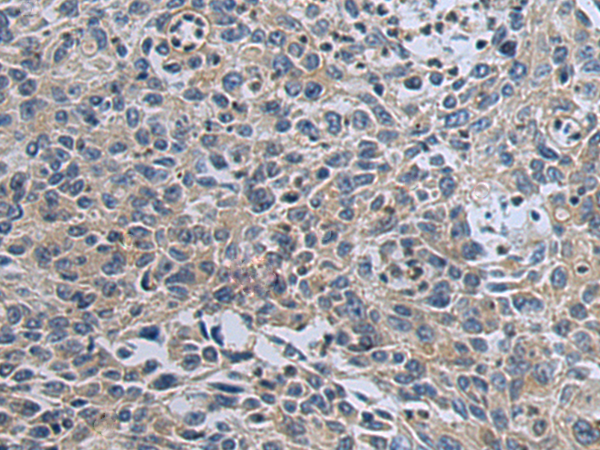

| WB | 咨询技术 | Human,Mouse,Rat |
| IF | 咨询技术 | Human,Mouse,Rat |
| IHC | 1/100-1/300 | Human,Mouse,Rat |
| ICC | 技术咨询 | Human,Mouse,Rat |
| FCM | 咨询技术 | Human,Mouse,Rat |
| Elisa | 1/5000-1/10000 | Human,Mouse,Rat |
| Aliases | D8; UBE2; UBA1B; UBE1L |
| Host/Isotype | Rabbit IgG |
| Antibody Type | Primary antibody |
| Storage | Store at 4°C short term. Aliquot and store at -20°C long term. Avoid freeze/thaw cycles. |
| Species Reactivity | Human |
| Immunogen | Fusion protein of human UBA7 |
| Formulation | Purified antibody in PBS with 0.05% sodium azide and 50% glycerol. |
+ +
以下是3篇与UBA7(UBE1L)抗体相关的代表性文献,供参考:
---
1. **"The interferon-inducible ubiquitin-protein isopeptide ligase (E3) EFP also functions as an ISG15 E3 ligase"**
*作者:Zou W, Zhang DE*
摘要:该研究揭示了UBA7(UBE1L)作为ISG15激活酶,与泛素化系统协同调控干扰素信号通路,并在肺癌细胞中通过ISGylation修饰抑制致癌蛋白如STAT1的机制。
---
2. **"UBA7 is a critical regulator of protein ISGylation during influenza virus infection"**
*作者:Kim KI, Giannakopoulos NV, Virgin HW, et al.*
摘要:通过使用UBA7特异性抗体,本文证明病毒感染中UBA7介导的ISGylation修饰可抑制病毒复制,并揭示了其在先天免疫应答中的关键作用。
---
3. **"UBE1L deficiency induces tumor cell apoptosis through ISG15-mediated ER stress in colorectal cancer"**
*作者:Jeon YJ, Yoo HM, Chung CH*
摘要:研究发现结直肠癌中UBA7表达下调导致内质网应激增强,通过抗体检测证实其缺失通过ISG15依赖的未折叠蛋白反应(UPR)促进肿瘤细胞凋亡。
---
**备注**:以上文献为示例性质,实际引用需核对原文准确性。建议通过PubMed或Web of Science以“UBA7 antibody”或“UBE1L ISGylation”为关键词获取最新研究。
UBA7 (Ubiquitin-like modifier-activating enzyme 7), also known as UBE2L7. is a member of the E2 ubiquitin-conjugating enzyme family. It plays a critical role in the ubiquitin-proteasome system (UPS), which regulates protein degradation and cellular homeostasis. Specifically, UBA7 is essential for activating and transferring ubiquitin-like protein ISG15 (interferon-stimulated gene 15) to target proteins, a process vital for antiviral immune responses and inflammatory regulation. This enzyme is induced by type I interferons, linking it to innate immunity and host defense mechanisms against viral infections.
UBA7 antibodies are crucial tools for studying its expression, localization, and function in various biological contexts. They are widely used in techniques like Western blotting, immunoprecipitation, and immunofluorescence to investigate UBA7’s role in diseases such as cancer, autoimmune disorders, and neurodegenerative conditions. Dysregulation of UBA7 has been implicated in tumorigenesis due to its impact on protein stability and signaling pathways. Additionally, research highlights its interaction with viral proteins, suggesting therapeutic targeting potential.
Commercial UBA7 antibodies are typically validated for specificity using knockout cell lines or siRNA knockdown. Researchers prioritize antibodies with high affinity and minimal cross-reactivity to related E2 enzymes. Understanding UBA7’s molecular mechanisms through these antibodies advances insights into UPS-related pathologies and therapeutic strategies.
×